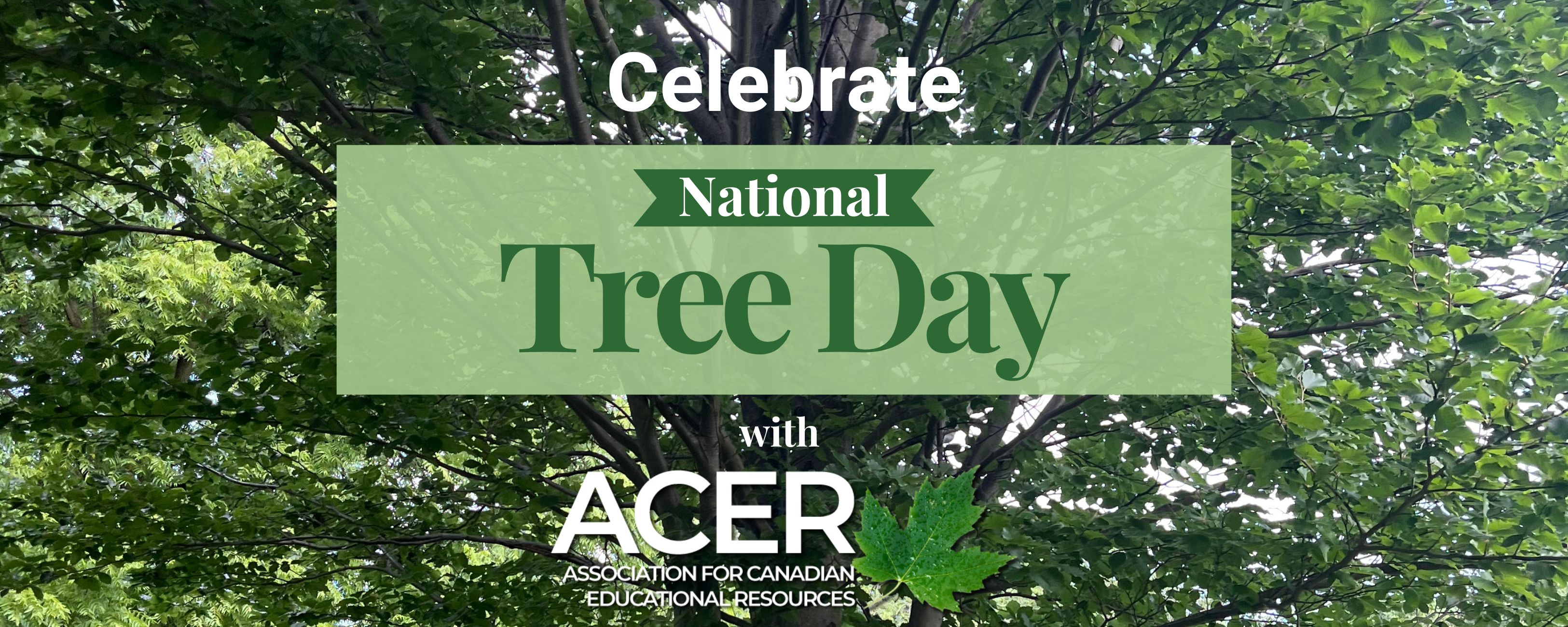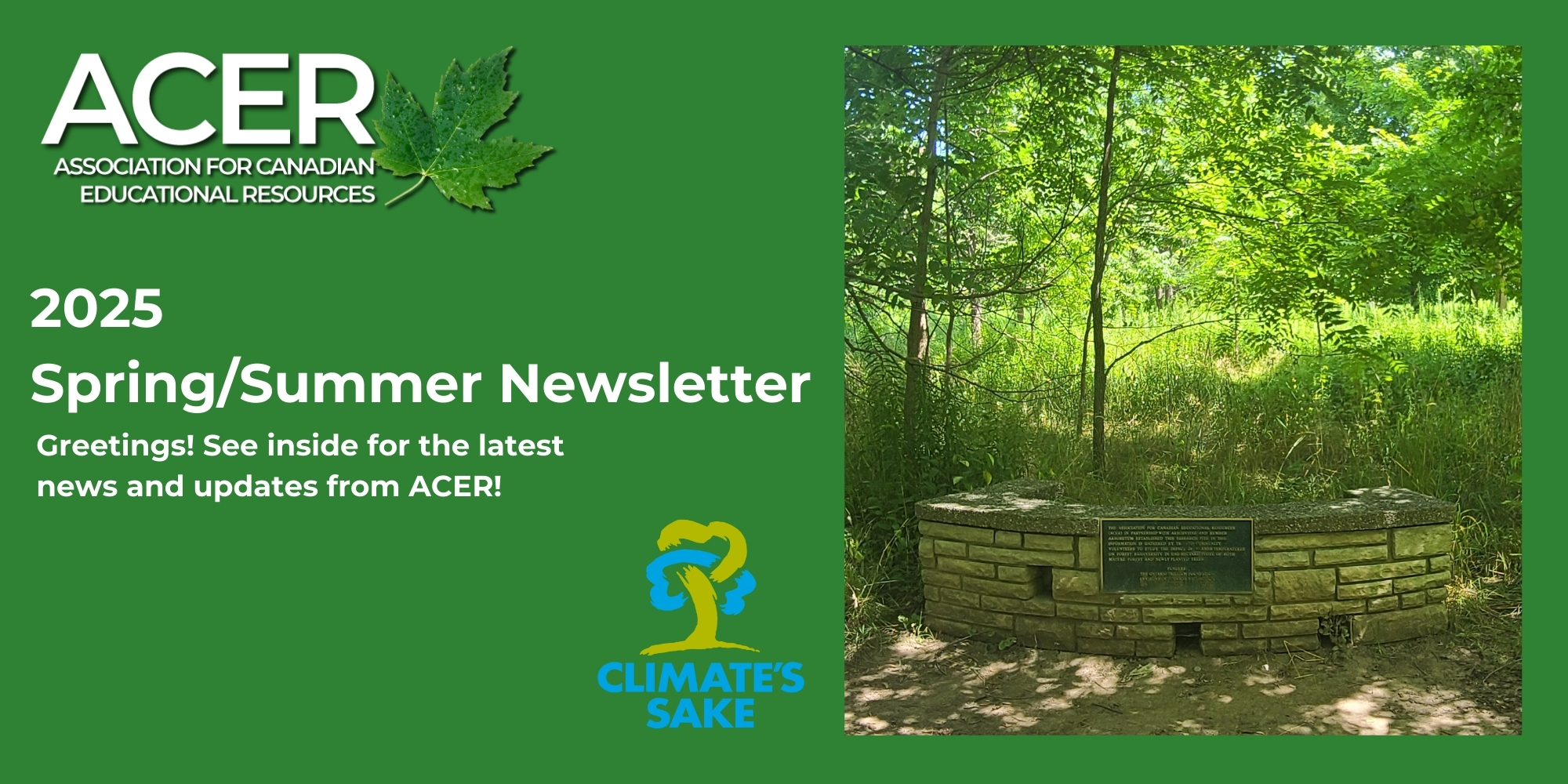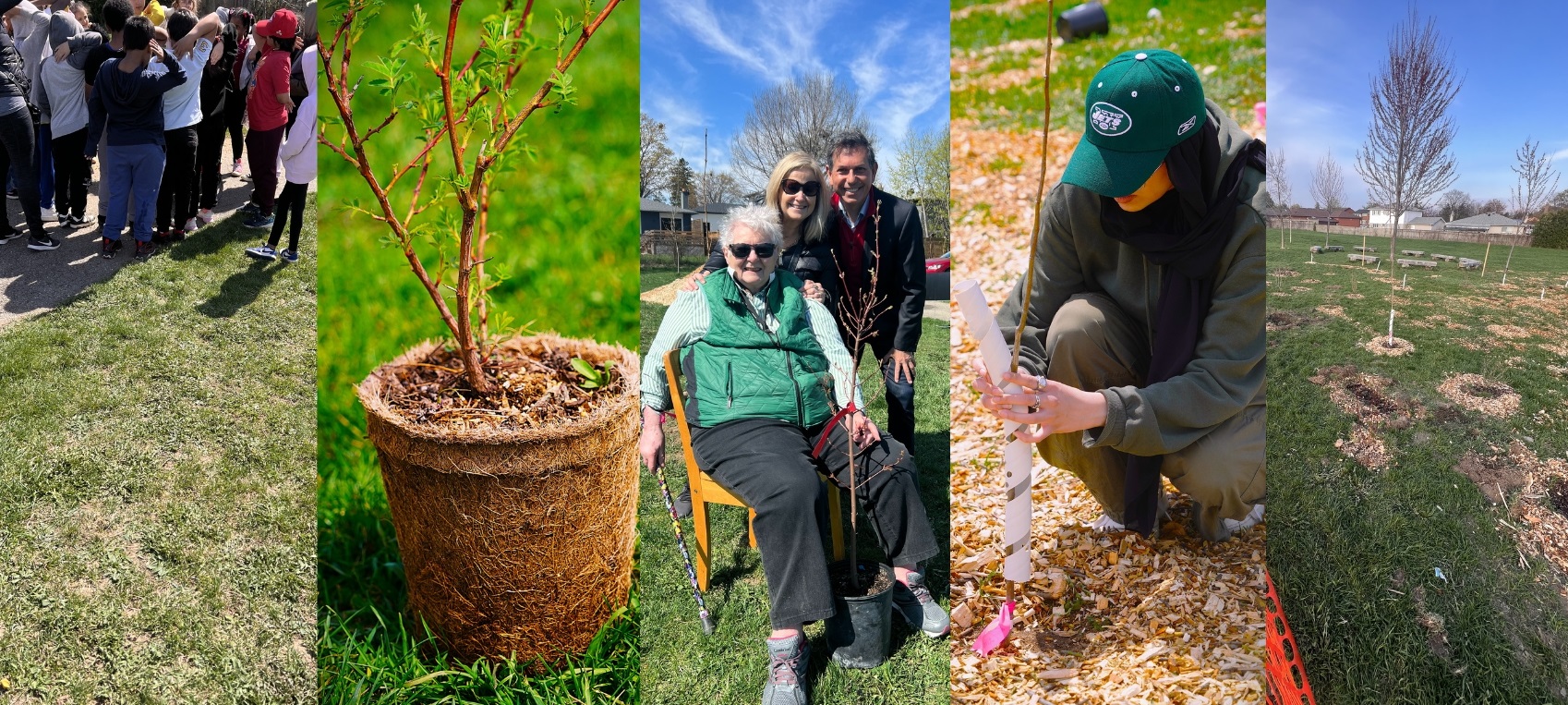By Alice Casselman, ACER Founder and President — October 2024
To me, one of the best parts of fall is the whole new colour palette I see as I walk along roadsides and ditch-lined streets. Fall is a royal display of gold and purple – gold from goldenrod, jewelweed, and tamaracks and purple from asters!

Goldenrod lives up to its colourful name with all 50 or so species waving their gold flags of tiny flowers during the summer and early fall, an excellent food source for pollinators! Later on, when it transitions during the fall to a grey crown of seeds, those become food for many small birds. Unfortunately, goldenrod is often maligned for causing allergies that are more likely caused by ragweed, a plant that often grows nearby. As an educator, I see the goldenrod as a wonderful field teaching tool – a mini ecosystem! Did you know that the balls often seen on goldenrod stems, called galls, are the result of gall flies laying their eggs on young stems? After the egg becomes a larva (grub), the larva eats into the stem and the goldenrod responds to its saliva by growing tissue around it to protect the plant. Once the larva develops into a fly it eats its way out of the gall leaving a hole that we can see. Sometimes even bigger holes are seen – caused by birds that eat the growing larvae – a tasty protein source! Other times though there is only the skeleton of the larva left, when the larva gets eaten by wasp young that have hatched from eggs inserted into the gall “nursery, there is only a skeleton left. What a fascinating mini food-web story! On your next fall walk see if you can spot a gall, then open it up and see who’s home!

Named because a drop of rain on its leaf forms a little ball reflecting light like a diamond, the jewelweed or “touch-me-not” is also fascinating because its seed pods explode on touch – a big surprise when you try to pick a pod! The species we see most often – Impatiens capensis, aka “Spotted jewelweed” – has a golden flower with red flecks. Did you know that the juice of young stems can be used to treat skin rashes and infections and can provide relief when rubbed on a suspected poison ivy rash? Good to know, since poison ivy often grows nearby, in shady wet places!

Named for the Greek word for star, there are over 30 species of aster that add vibrant colour to fall walks in Ontario, some of the most beautiful being those blooming with the purple of royalty! Did you know that the leaves of aster are food for over 100 species of caterpillars? And that, once those caterpillars become butterflies or moths they, along with other insect pollinators, feed on the leaves of asters? Birds then eat some of those same insects moving energy up the food chain! How many aster colours can you find on your fall walk? Can you find one with an insect on the flower?
One MAJOR surprise gold found in the fall is that of the tamarack tree when its needles begin to die before they eventually drop off. To learn more about the tamarack, check out our recent Tree Tuesday post on Facebook or Instagram, or look it up in ACER’s Treepedia!







